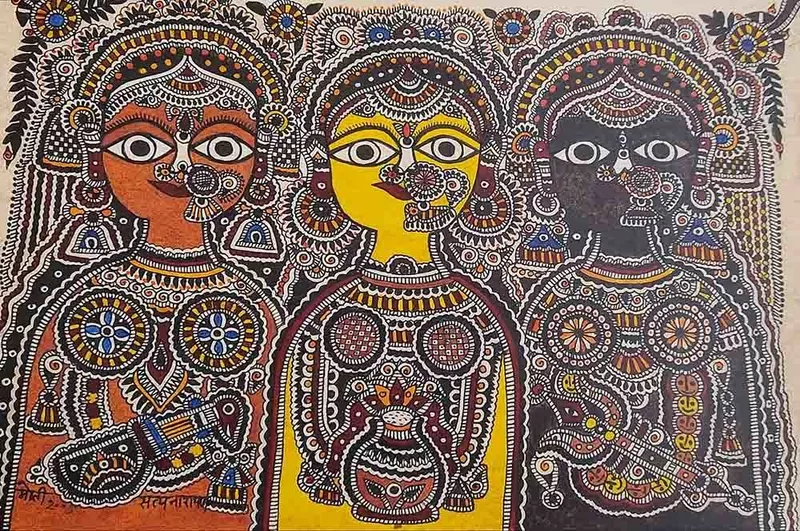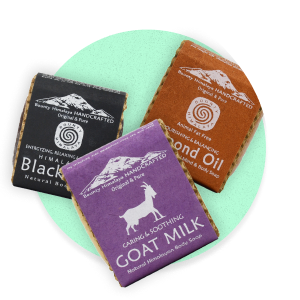Art(Mithila)
Why Folk Art Paintings Of Mithila Need To Be Promoted
The art form of folk art is associated with the common man who makes it. It relates to a particular society, caste, and religion and is practised as a ritual by a group within the periphery of the society. But the geographical and cultural factors of Mithila did not assist in creative activities. As a result, the people of Mithila developed am entirely different from art catering to their needs and taste. They amassed incredible fame and recognition in the world for their style and technique. Despite various economic restraints, these artists made these wall paintings on every religious and social occasion. It would be safe to say that this art form came under the domination and underestimation of women artists of Mithila. Today, the Mithila art form is a feminine and cultural preserve that represents the socio-economic conditions and mythical legends associated with Mithila.
Read: A Guide To Mithila Art
The origin and history of Mithila art:

The birthplace of Sita, Janakpur cradles the Mithila civilization. The Indian sub-continental epic of the Ramayana is considered to be the origin of the Mithila art. It is believed that King Janaka of Mithila hired local artists to decorate the town of Janakpur with a unique art form for the wedding of his daughter Sita to Lord Ram in the 8th or 7th century BCE. Centuries of modern democracy and appreciation for folk art have revitalized the heritage, culture, and traditional art of Mithila. However, it was only when the Panchayat regime ended in 1990 that this art form began garnering international attention as one of the Nepali folk arts. As the art evolved, the paintings became more than a way to beautify homes and provided women with a creative outlet to tell the stories of their lives.
Mithila, the Maithili-speaking territory in Mid-west Nepal and some places in Bihar, India, was a very highly educated country thousands of years ago. The country was very rich in arts of its own type and style, which now we know as Mithila Arts.
Then, Mithila paintings (also known as Madhubani paintings) were done at weddings, festivals, and feasts. The artists were mostly women of the family, who oversaw the responsibility of decorations in their respective homes. They are done in primary colours of natural origin using flours, clay, and cow dung on hand-painted wall hangings, wooden stools, miniature paper and leaves, stone pottery, bamboo and leather goods, and applique work. As it evolved, the centuries-old art form has now gone commercial, enabling female artists to hone their skills. What was passed down from one generation of mothers to the next generation of their daughters, gives them financial independence, recognition, and respect within Nepal, and increasingly, across the world.
Read: The Historical Significance of Mithila Art
The problem:
Madhubani paintings are among the most famous paintings in the world. But today, the world has advanced and modernized so much that there is only space for change. People aren’t interested in anything that is relevant to the current times. Consequently, most aren’t interested in traditional folk art anymore. The ‘experts’ are getting older, and the younger generation isn’t interested in taking over the art or promoting it. It is becoming more difficult to keep folk art alive.
Part of the problem is that young people don’t know much about folk art. Governments in respective countries aren’t doing much to promote it either. When there aren’t fairs, exhibitions, and showcases to give exposure to art forms, they can’t prosper. This is, unfortunately, the case for Mithila art too. Not everyone learns about it in schools, or even if we do, pen and paper knowledge doesn’t tally getting involved directly in art forms. When have we truly seen mass-promoted and advertised exhibitions and fairs for Mithila art? Or proper, established marketplaces? If we have, when was the time we bought any?
The challenge at hand is that we don’t understand why we need to preserve and promote folk art, Mithila, or any other. We don’t value the art, and the effort it takes to make art. We don’t know the historical significance of folk art, how it has evolved since its origin, and why it is relevant in modern times.
Art is fundamental to our humanity:
Art enables and inspires us. It fosters creativity, goodness, and beauty. Art helps us express our values, build bridges between cultures, and bring us together regardless of ethnicity, religion, or age. Art is a salve to promote harmony and prosperity. Traditional art provides a shared experience for the community. Values and belief systems are often embedded in these art forms and passed down through generations. They double as a creative language through which we can engage the various communities that make up our society.
In the case of Mithila art, the origin can be traced back to the 7th or 8th century BCE Mithila. The birthplace of Sita, Janakpur cradles the Mithila civilization. The Indian sub-continental epic of the Ramayana is considered to be the origin of the Mithila art. It is believed that King Janaka of Mithila hired local artists to decorate the town of Janakpur with a unique art form for the wedding of his daughter Sita to Lord Ram. even today, the paintings feature scenes from social events like weddings, in the royal and local senses. The art form also reflects the natural environment including animals, people, lifestyle, tradition, and culture of the local people. Some include scenes of religious legends and deities from ancient tales. Natural objects like the Sun, the Moon, the Tulsi plant are also widely painted, as they hold much religious and cultural significance in Hinduism.
Mithila art is unique:

Besides the subject of the paintings, what makes Mithila art so special and beautiful is that there is no space left in the canvas of choice. The gaps are all filled by paintings of flowers, animals, birds, and even geometric designs of a variety of colours. The paintings are all narrations of mythological and religious events done with fingers, twigs, brushes, nib-pens, and even matchsticks. They are done in primary colours of natural origin using flours, clay, and cow dung on hand-painted wall hangings, wooden stools, miniature paper and leaves, stone pottery, bamboo and leather goods, and applique work.
The artists of Mithila, generally women, use different local colours in their art. They use bright and vibrant colours which makes their art stand attractive and eye-catching. Generally, they use bright red, yellow, and black colours accompanied by green, orange, brown, blue, and white. The three primary colours red, yellow, and black are very natural. The artist women derive the colour black from soot, the colour red from local clay, and the colour yellow from petals of flowers or turmeric. These indigenous colours make the art attractive, lasting, and inexpensive.
They prepare vegetable colours from different flowers, fruits, bark, and roots. The colours become durable and adhesive after mixing in the gum which is also prepared naturally from the Babul tree. Black is easily obtained from lamp or fire soot and is easily dissolved in hum water. A light colour is obtained by mixing cow-dung and gum in freshwater. The bark of the Peepal tree is dried in the Sub and boiled in water until it gives a pink colour. The blue colour is obtained by crushing the berries of wild herbs. They also use watercolour mixed with rice flour (called ‘pithar’ in the local language) and vermillion (‘sindur’ in the local language).
Mithila art is a valuable cultural currency in the global economy
Traditionally, women were responsible for decorative tasks in social and everyday events. But as Mithila art has commercialized, it is drawing more artists towards entrepreneurship. Correctly promoting it nationally and internationally is bound to boost up sales. The artists get the profits directly and earn a reputable status in the art community. They can fund their business, the wellbeing of their community, and the prosperity of their art form as they see fit.
Mithila art also has a lot of potentials to strengthen our economy and drive tourism. Nepal is already at the top of most adventurers’ travel lists because of its natural and cultural beauty. If we can offer them a piece of an art form that holds a significant part in the legends of Hinduism, it can generate valuable revenue.
Furthermore, art is also an export industry. Already so many locally made products in Nepal are making their way to international markets. With the rise of eCommerce and new businesses, Mithila art can get a lot of exposure worldwide.
Conclusion:
In presenting traditional art forms to the public, these art forms can also promote greater inter-racial understanding and international bonding. In the digital age, it is easy to do that. Social media, online art galleries, and virtual events are some ways to make good use of the Internet in promoting folk art paintings of Mithila. This should be the norm. As it is not yet, we have to focus on the challenges the art form and artists face and tackle one at a time.
Check out the popular NFT collection: Janani inspired by the Mithila Art!




